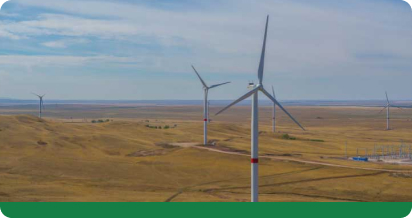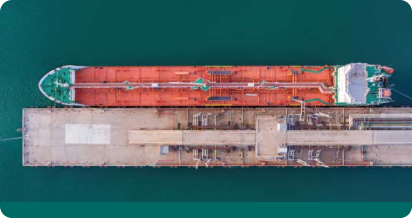Kazakhstan, being the largest emitter of greenhouse gases in Central Asia3, expresses its commitment to the global goal of addressing climate change. The country has established a database of strategic documents related to climate change. We adhere to the goals of being one of the first in this aspect – the Concept of the transition of the Republic of Kazakhstan to a “green economy”. The Concept includes indicators for improving energy efficiency and reducing carbon dioxide emissions in the power sector. In 2016, Kazakhstan ratified the Paris Agreement. Furthermore, after the announcement by the President of Kazakhstan in December 2020 on the goal to achieve carbon neutrality, the country began developing a Strategy for Achieving Carbon Neutrality by 2060, in which we are actively participate.
As a socially responsible organization, we can play an significant role in promoting the climate agenda in Kazakhstan and worldwide. We are a driver for the transition to low-carbon development, setting the tone and strategic direction for our portfolio companies. The Fund shares the global concern about climate change and supports global efforts to reduce greenhouse gas emissions. To this end, the Fund has calculated the carbon footprint of the Fund Group for 2022. It amounted to 60.9 million tons of CO2 equivalent. Of these, 50.7 million tons of CO2 equivalent are direct CO2 emissions, 10.2 million tons of CO2 equivalent are indirect emissions. Among the Fund’s enterprises, the highest direct greenhouse gas emissions are attributed to Samruk-Energy JSC (65 %), which is primarily engaged in electricity generation from coal-fired power plants. The share of direct greenhouse gas emissions from the oil and gas industry (JSC NC KazMunayGas and JSC NC QazaqGaz) is 28 %, as their activities are also focused on fossil fuels. All other companies of the Fund account for less than 7 % of the total emissions.
Since 2013, the country has established an emissions trading system and we keep track and inventory of direct greenhouse gas emissions. Currently, the emissions trading system covers only a part of the sectors and accounts for nearly 50 % of all greenhouse gas emissions in Kazakhstan. However, our major portfolio companies are participants in this system and receive emission allowances.
Within the framework of the modern climate agenda, we recognize the need to reduce the growing burden on the climate and the environment. We align ourselves with the climate targets set by our country and support the initiative to achieve carbon neutrality in the Republic of Kazakhstan by 2060. As a major holding representing the state’s interests in sectors of the economy with significant climate impacts, the Fund plays a key role in the transitioning Kazakhstan’s economy onto a sustainable path. We invest in various projects for the construction and modernization of production facilities that use more efficient and environmentally friendly production technologies. We support innovative projects aimed at using renewable energy sources, such as solar and wind power, attracting investments in projects that align to these trends and have the potential for profitabity.
We have identified decarbonization as one of our priority strategic objectives, aimed at enhancing sustainability, ensuring energy security and strengthening competitiveness. In order to establish target indicators, we conducted modeling in 2022 based on three development scenarios for the Fund until 2032, with the prospective of achieving carbon neutrality by 2060: “Business as Usual”, “Decarbonization” and “Deep Decarbonization”.
The most optimistic scenario, Deep Decarbonization, aims to achieve a 10 % reduction in carbon footprint by 2032 compared to the 2021 level. This scenario assumes a faster energy transition through accelerated commissioning of nuclear power plants, with the first unit starting operation in 2032. It also involves increasing the share of RES and HPPs to 30 %, raising the level of electrification in the transportation sector to 19 %, and increasing the share of electricity purchased from alternative sources to 45 %.
Under a neutral scenario (Decarbonization), it is only possible to maintain emissions at the level of 2021. Whereas in the “Business as Usual” scenario, projects a 19 % increase in carbon footprint, as it assumes the continuation of current trends without a focus on decarbonization.
Our low-carbon development directions align completely with the national “Strategy for Achieving Carbon Neutrality by 2060”. In all scenarios, we recognize the need for new capacity additions to avoid energy shortages in the country. However, achieving our carbon reduction goals is impossible without the deployment of nuclear power plants, with the first unit in 2032. The introduction of an environmentally friendly source of baseload power will help reduce the reliance on coal-fired power plants and enable the decommissioning of the aging units at the Ekibastuz GRES-1 power plant.
The results obtained served as the basis for the Low-Carbon Development Concept approved in the reporting year and the Action Plan for the Transition to a Low-carbon Business Model. The Concept outline the vision, goals and key directions of a fair and economically viable low-carbon development of the Fund with an estimated implementation cost of around $20-25 billion USD. In the reporting year, all major holding companies developed their own transition plans aligned with the Low-Carbon Development Concept, including specific goals, activities, projects and associated costs.



